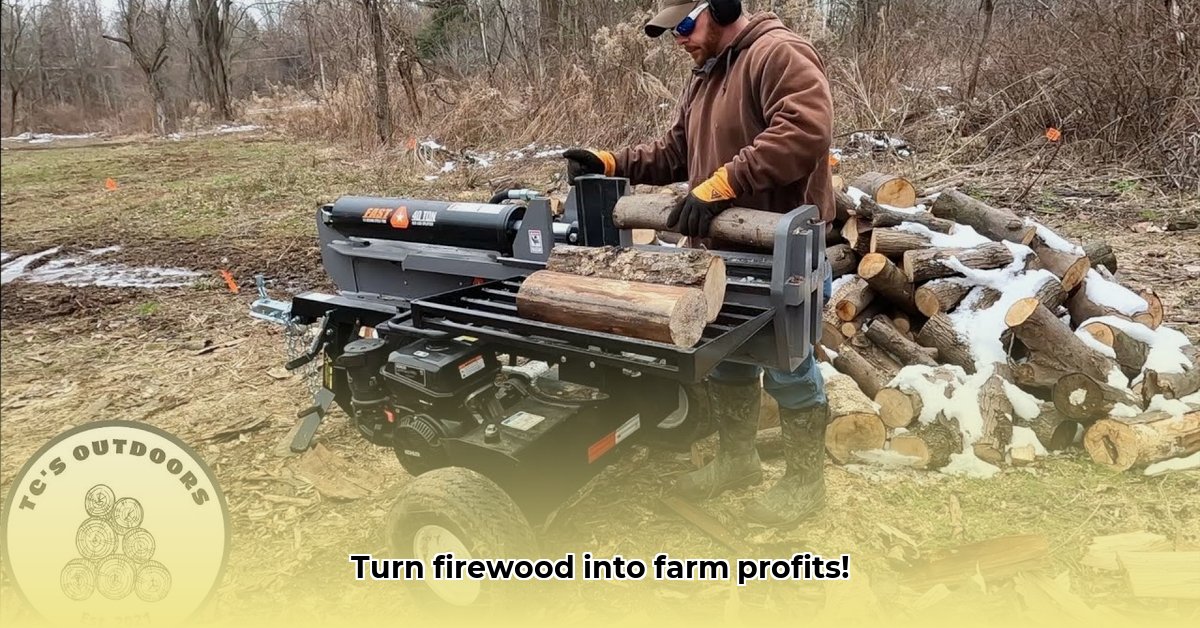
Turning Wood Waste into Profit: A Bioenergy Guide for Farmers
Dealing with agricultural wood waste is a persistent challenge for farmers. But what if this waste could become a profitable source of energy? This guide provides a practical, step-by-step approach to converting agricultural wood waste into bioenergy, maximizing your farm's efficiency and profitability. We’ll explore readily available resources like firewood from Tractor Supply to launch your bioenergy journey. For more on Tractor Supply equipment, check out Tractor Supply plows.
A Step-by-Step Guide to Bioenergy Production
Converting wood waste into energy involves several key stages:
Gather and Prepare: Begin by meticulously collecting your wood waste. Proper storage is crucial; keeping it dry significantly enhances efficiency. Consider investing in tarps or a covered storage area to protect your fuel from the elements. Next, prepare the wood by chopping or chipping it into smaller pieces, improving combustion efficiency. (Smaller pieces = faster, more efficient burning).
Select Your System: Choose a biomass system (boiler, furnace, or other) suitable for your farm’s size and energy needs. Several small-scale, high-efficiency options are available to suit various budgets and applications. (Consider your budget, energy requirements, and available space when selecting a system.)
Optimize Your System: Regular maintenance is crucial. Implement a routine maintenance schedule to keep your system running smoothly and efficiently. Utilize data analytics to monitor performance and pinpoint areas for improvement, enhancing profitability. (Regular maintenance and data analytics minimize waste and maximize output.)
Explore Additional Revenue: Diversify your income by selling byproducts, such as firewood (available through retailers like Tractor Supply). This secondary revenue stream can significantly improve your overall profitability. (Selling excess firewood adds extra income and minimizes waste.)
Comply with Regulations: Familiarize yourself with and adhere to all relevant environmental regulations and permits concerning waste management and energy production. Non-compliance can lead to penalties. (Proactive regulatory compliance prevents legal issues and fines.)
Did you know? Properly dried wood waste has a significantly higher energy density than damp wood, increasing your system's efficiency. (Source: 1https://financialmodeltemplates.com/blogs/profitability/bioenergy-production-from-agricultural-waste)
Assessing Your Resources and Market Viability
Before starting, conduct a thorough feasibility study. This includes analyzing the types and quantities of wood waste available, researching market demand for bioenergy in your region, and determining current market prices. "A well-executed market analysis is paramount to the success of your bioenergy venture," advises Dr. Anya Sharma, Professor of Agricultural Economics at the University of California, Davis.
Building a Sustainable Supply Chain
Secure a consistent supply of wood waste by partnering with other farms or agricultural businesses. Negotiate contracts specifying quantities, delivery schedules, and pricing to ensure a reliable source of raw materials throughout the year. "Strategic partnerships are key to long-term success in bioenergy," explains John Miller, CEO of Green Solutions, Inc.
Choosing the Right Bioenergy Technology: A Comparative Analysis
Different bioenergy technologies offer varying levels of efficiency and cost-effectiveness. The best technology will depend on your specific needs and resources.
| Technology | Advantages | Disadvantages |
|---|---|---|
| Anaerobic Digestion | Reduces greenhouse gas emissions, produces biogas. | High initial investment, complex operation. |
| Gasification | High energy efficiency, versatile fuel options. | High initial investment, complex technology. |
| Direct Combustion | Relatively simple, low initial investment. | Lower efficiency, potential air pollution issues. |
Key Takeaway: Careful planning and a comprehensive understanding of available technologies are crucial for maximizing your investment's return. (Source: 1https://financialmodeltemplates.com/blogs/profitability/bioenergy-production-from-agricultural-waste)
Maximizing Profits: Strategies for Success
- Efficient Operation: Regular maintenance and data analysis will help you optimize your system’s performance and minimize waste.
- Strategic Partnerships: Collaborate with other farmers to secure a stable supply chain and share costs.
- Regulatory Compliance: Understand and follow all relevant environmental regulations.
- Diversification: Explore additional revenue streams, such as selling firewood.
This guide provides a framework for launching and sustaining a profitable bioenergy project. Remember: starting small with readily available firewood (from Tractor Supply, for instance) is a smart, low-risk approach to gaining valuable experience before expanding your operation. By embracing sustainable practices, you not only boost your farm's profitability, but you also contribute to a healthier environment.